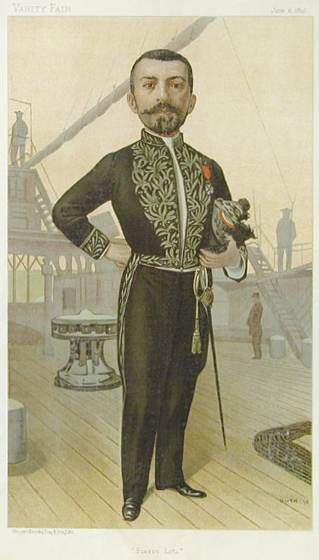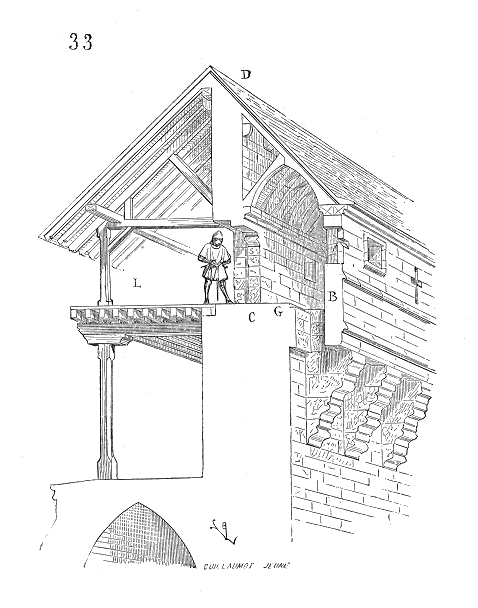|
Château De La Roche Courbon
Château de la Roche Courbon is a large château, developed from an earlier castle, in the Charente-Maritime ''département in France, département'' of France. It is in the commune of Saint-Porchaire between Saintes, Charente-Maritime, Saintes and Rochefort, Charente-Maritime, Rochefort. The château is privately owned, and classified as a historic monument. The garden is listed by the French Ministry of Culture as one of the Notable Gardens of France, and also a historic monument. History A castle was built around 1475 by Jehan de Latour, on site which had been inhabited since prehistoric times. In the 17th century, the Courbon family, which had occupied the castle for two centuries, transformed it into a more comfortable residence. More alterations were made in the 18th century, but it was eventually sold in 1817 and then abandoned. It was purchased in 1920 by Paul Chénereau, who restored the château and its gardens. The château is still owned and inhabited by his descendant ... [...More Info...] [...Related Items...] OR: [Wikipedia] [Google] [Baidu] |
Fountain
A fountain, from the Latin "fons" ( genitive "fontis"), meaning source or spring, is a decorative reservoir used for discharging water. It is also a structure that jets water into the air for a decorative or dramatic effect. Fountains were originally purely functional, connected to springs or aqueducts and used to provide drinking water and water for bathing and washing to the residents of cities, towns and villages. Until the late 19th century most fountains operated by gravity, and needed a source of water higher than the fountain, such as a reservoir or aqueduct, to make the water flow or jet into the air. In addition to providing drinking water, fountains were used for decoration and to celebrate their builders. Roman fountains were decorated with bronze or stone masks of animals or heroes. In the Middle Ages, Moorish and Muslim garden designers used fountains to create miniature versions of the gardens of paradise. King Louis XIV of France used fountains in the Gard ... [...More Info...] [...Related Items...] OR: [Wikipedia] [Google] [Baidu] |
Historic House Museums In Nouvelle-Aquitaine
History is the systematic study of the past, focusing primarily on the human past. As an academic discipline, it analyses and interprets evidence to construct narratives about what happened and explain why it happened. Some theorists categorize history as a social science, while others see it as part of the humanities or consider it a hybrid discipline. Similar debates surround the purpose of history—for example, whether its main aim is theoretical, to uncover the truth, or practical, to learn lessons from the past. In a more general sense, the term ''history'' refers not to an academic field but to the past itself, times in the past, or to individual texts about the past. Historical research relies on primary and secondary sources to reconstruct past events and validate interpretations. Source criticism is used to evaluate these sources, assessing their authenticity, content, and reliability. Historians strive to integrate the perspectives of several sources to develop a ... [...More Info...] [...Related Items...] OR: [Wikipedia] [Google] [Baidu] |
Museums In Charente-Maritime
A museum is an institution dedicated to displaying or preserving culturally or scientifically significant objects. Many museums have exhibitions of these objects on public display, and some have private collections that are used by researchers and specialists. Museums host a much wider range of objects than a library, and they usually focus on a specific theme, such as the arts, science, natural history or local history. Public museums that host exhibitions and interactive demonstrations are often tourist attractions, and many draw large numbers of visitors from outside of their host country, with the most visited museums in the world attracting millions of visitors annually. Since the establishment of the earliest known museum in ancient times, museums have been associated with academia and the preservation of rare items. Museums originated as private collections of interesting items, and not until much later did the emphasis on educating the public take root. Etymology The ... [...More Info...] [...Related Items...] OR: [Wikipedia] [Google] [Baidu] |
Gardens In Charente-Maritime
A garden is a planned space, usually outdoors, set aside for the cultivation, display, and enjoyment of plants and other forms of nature. The single feature identifying even the wildest wild garden is ''control''. The garden can incorporate both natural and artificial materials. Gardens often have design features including statuary, follies, pergolas, trellises, stumperies, dry creek beds, and water features such as fountains, ponds (with or without fish), waterfalls or creeks. Some gardens are for ornamental purposes only, while others also produce food crops, sometimes in separate areas, or sometimes intermixed with the ornamental plants. Food-producing gardens are distinguished from farms by their smaller scale, more labor-intensive methods, and their purpose (enjoyment of a pastime or self-sustenance rather than producing for sale, as in a market garden). Flower gardens combine plants of different heights, colors, textures, and fragrances to create interest and delight the ... [...More Info...] [...Related Items...] OR: [Wikipedia] [Google] [Baidu] |
Saintonge (region)
Saintonge (), historically spelled Xaintonge and Xainctonge, is a region of France located on the west central Atlantic coast, corresponding with the former province of the same name. The largest city is Saintes (Xaintes, Xainctes). Other principal towns include Saint-Jean-d'Angély, Jonzac, Frontenay-Rohan-Rohan, Royan, Marennes, Pons, and Barbezieux-Saint-Hilaire. In 1790, during the French Revolution, Saintonge became part of Charente-Inférieure, one of the 83 departments organized by the new government. This was renamed as Charente-Maritime in 1941, during World War II. The region is known for its Romanesque churches. See Saintonge Romane (Éditions Zodiaque) - 'sa richesse en monuments l'emporte sur tout autre', p.7 History The region derives its name from the '' Santones'', an ancient Gallic tribe that once inhabited the area. They were one of the numerous Celtic peoples in Europe before the rise of the Roman Empire. During antiquity, Saintonge was part o ... [...More Info...] [...Related Items...] OR: [Wikipedia] [Google] [Baidu] |
Pierre Loti
Pierre Loti (; pseudonym of Louis Marie-Julien Viaud ; 14 January 1850 – 10 June 1923) was a French naval officer and novelist, known for his exotic novels and short stories.This article is derived largely from the ''Encyclopædia Britannica Eleventh Edition'' (1911) article "Pierre Loti" by Edmund Gosse. Unless otherwise referenced, it is the source used throughout, with citations made for specific quotes by Gosse. Biography Born to a Protestant family, Loti's education began in his birthplace, Rochefort, Charente-Maritime. At age 17 he entered the naval school in Brest and studied at Le Borda. He gradually rose in his profession, attaining the rank of captain in 1906. In January 1910 he went on the reserve list. He was in the habit of claiming that he never read books, saying to the Académie française on the day of his introduction (7 April 1892), "''Loti ne sait pas lire''" ("Loti doesn't know how to read"), but testimony from friends proves otherwise, as does his libra ... [...More Info...] [...Related Items...] OR: [Wikipedia] [Google] [Baidu] |
Sandstone
Sandstone is a Clastic rock#Sedimentary clastic rocks, clastic sedimentary rock composed mainly of grain size, sand-sized (0.0625 to 2 mm) silicate mineral, silicate grains, Cementation (geology), cemented together by another mineral. Sandstones comprise about 20–25% of all sedimentary rocks. Most sandstone is composed of quartz or feldspar, because they are the most resistant minerals to the weathering processes at the Earth's surface. Like uncemented sand, sandstone may be imparted any color by impurities within the minerals, but the most common colors are tan, brown, yellow, red, grey, pink, white, and black. Because sandstone beds can form highly visible cliffs and other topography, topographic features, certain colors of sandstone have become strongly identified with certain regions, such as the red rock deserts of Arches National Park and other areas of the Southwestern United States, American Southwest. Rock formations composed of sandstone usually allow the p ... [...More Info...] [...Related Items...] OR: [Wikipedia] [Google] [Baidu] |
Stone Age
The Stone Age was a broad prehistory, prehistoric period during which Rock (geology), stone was widely used to make stone tools with an edge, a point, or a percussion surface. The period lasted for roughly 3.4 million years and ended between 4000 Anno Domini, BC and 2000 BC, with the advent of metalworking. It therefore represents nearly 99.3% of human history. Though some simple metalworking of malleable metals, particularly the use of Goldsmith, gold and Coppersmith, copper for purposes of ornamentation, was known in the Stone Age, it is the melting and smelting of copper that marks the end of the Stone Age. In Western Asia, this occurred by about 3000 BC, when bronze became widespread. The term Bronze Age is used to describe the period that followed the Stone Age, as well as to describe cultures that had developed techniques and technologies for working copper alloys (bronze: originally copper and arsenic, later copper and tin) into tools, supplanting ston ... [...More Info...] [...Related Items...] OR: [Wikipedia] [Google] [Baidu] |
Machicolated
In architecture, a machicolation () is an opening between the supporting corbels of a battlement through which defenders could target attackers who had reached the base of the defensive wall. A smaller related structure that only protects key points of a fortification are referred to as Bretèche. Machicolation, hoarding, bretèche, and murder holes are all similar defensive features serving the same purpose, that is to enable defenders atop a defensive structure to target attackers below. The primary benefit of the design allowed defenders to remain behind cover rather than being exposed when leaning over the parapet. They were common in defensive fortifications until the widespread adoption of gunpowder weapons made them obsolete. Etymology The word machicolation derives from Old French , mentioned in Medieval Latin">-4; we might wonder whether there's a point at which it's appropriate to talk of the beginnings of French, that is, when it wa ... , mentioned in Medieval Latin as ... [...More Info...] [...Related Items...] OR: [Wikipedia] [Google] [Baidu] |
Keep
A keep is a type of fortified tower built within castles during the Middle Ages by European nobility. Scholars have debated the scope of the word ''keep'', but usually consider it to refer to large towers in castles that were fortified residences, used as a refuge of last resort should the rest of the castle fall to an adversary. The first keeps were made of timber and formed a key part of the motte-and-bailey castles that emerged in Normandy and Anjou during the 10th century; the design spread to England, Portugal, south Italy and Sicily. As a result of the Norman Conquest of England in 1066, use spread into Wales during the second half of the 11th century and into Ireland in the 1170s. The Anglo-Normans and French rulers began to build stone keeps during the 10th and 11th centuries, including Norman keeps, with a square or rectangular design, and circular shell keeps. Stone keeps carried considerable political as well as military importance and could take a decade or more t ... [...More Info...] [...Related Items...] OR: [Wikipedia] [Google] [Baidu] |








